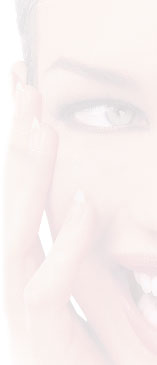| |
Q:
What are the different ways I can get my teeth whiter?
A:
There are mainly four techniques to improve one's smile:
 |
1)
Home Bleaching |
| |
2)
In-Office laser bleaching |
| |
3)
Bonding |
| |
4)
Porcelain laminate veneers |
Q:
How do I know which technique would work best for me?
A:
During the consultation visit, you would discuss with the doctor
the things you would like to change about your smile. You might
want to alter the shape, length, or contour of your teeth, close
spaces, straighten crooked teeth, fix chipped teeth, broaden your
smile, or just change the color of your teeth. Each of these four
techniques have their own advantages and disadvantages, so it is
very important to have a good understanding of what your ultimate
goals are.

Q: What are the advantages
and disadvantages of bleaching?
A: Bleaching
is relatively inexpensive and usually brightens the teeth quickly
and easily. On the other hand, it does not work equally well on
everyone, and therefore the results are less predictable than other
techniques. Newly bleached teeth tend to fade in color anywhere
from a month to 1-½ years. Teeth, which are very dark, especially
from tetracycline stains, bleach the poorest. The best results are
seen in people who were born with white teeth, yet whose teeth have
darkened with age due to tea, coffee, tobacco and red wine.
Q: How long does porcelain veneers last?
A:
Porcelain laminate veneers last between ten and twenty years. Porcelain,
because of its nature, will not stain, nor wear from brushing. Its
luster and translucency make it almost indistinguishable from natural
enamel. The veneer is a thin façade of porcelain, like an ultra
thin fingernail, which is bonded to the enamel. Once bonded to the
tooth, it becomes extremely strong and durable.
Q: How many visits does it take to do veneers?
A: In just two visits spaced a few
days apart, the dentist can complete both the upper and lower veneers.
At the first visit, the enamel is slightly drilled and roughened
to prepare it to accept a veneer. The patient will leave the office
with temporary veneers, which usually look better than their original
teeth. At the second visit, the temporaries are removed and the
porcelain veneers are placed on the teeth. At this point, the smile
makeover is complete.
Q: What determines the color and shape of the veneers we choose?
A: We look
at the shape of the face, whites of the eyes, skin tones, and even
the personality of the patient. These features, in combination with
the patient's desired smile makeover help determine the final designing
of the veneers.
|
 |




